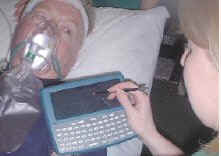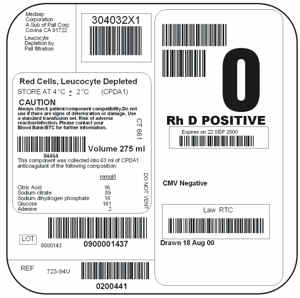| Medical Databases | |||
|
Most hospitals now keep records of their patients on a computer database. Electronic
Patient Record (EPR) keeping involves every patient having their
own record which can be sent between hospitals. The complete medical history
of the patient would be on the EPR.
The EPRs would be accessible to hospitals and also to doctors. Access to EPRs would be instant which would be of particular benefit to Accident & Emergency (A&E) staff who could make faster diagnoses of emergency patients.
|
 |
||
| "Monday
December 8th 2003
By 2010, every NHS patient in England will have an individual electronic NHS Care Record, announced Health Secretary John Reid today. A 10 year contract to set up and run the national NHS Care Records Service, which will provide the infrastructure to support this revolution in health and care information, has been awarded today to BT and is worth a total of £620million. The NHS Care Records Service will provide all 50 million NHS patients with an individual electronic NHS Care Record, which will detail key treatments and care within either the health service or social care. For the first time, information about patients will be mobile - just like patients themselves - and not remain in filing stores in the buildings where treatment or care has been received. The NHS Care Records Service will connect more than 30,000 GPs and 270 acute, community and mental health NHS trusts in a single, secure national system."
|
|||
| Disadvantage : EPRs
may be sold to insurance companies, police, legal firms etc undermining
doctor-patient confidence.
|
|||
|
ISBT 128 is the global standard for
identification and analysis of human blood and tissue. A global standard
is needed for transplant or transfusion patients to be able to safely
receive organs or blood anywhere in the world if needed.
All blood products are labelled using a bar code system. The system allows all blood donations to be traced to their origins. |
|||
|
|
|||


